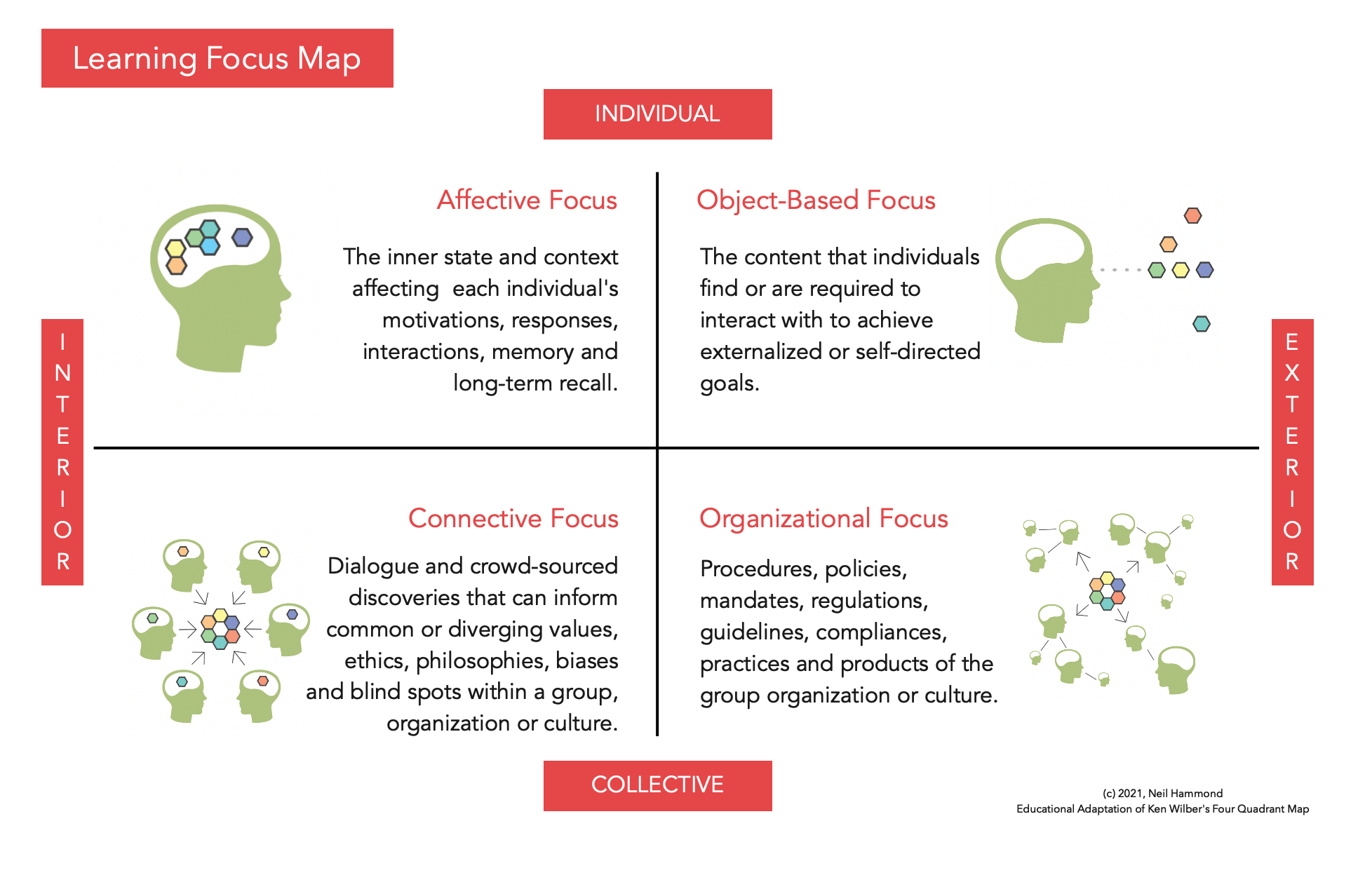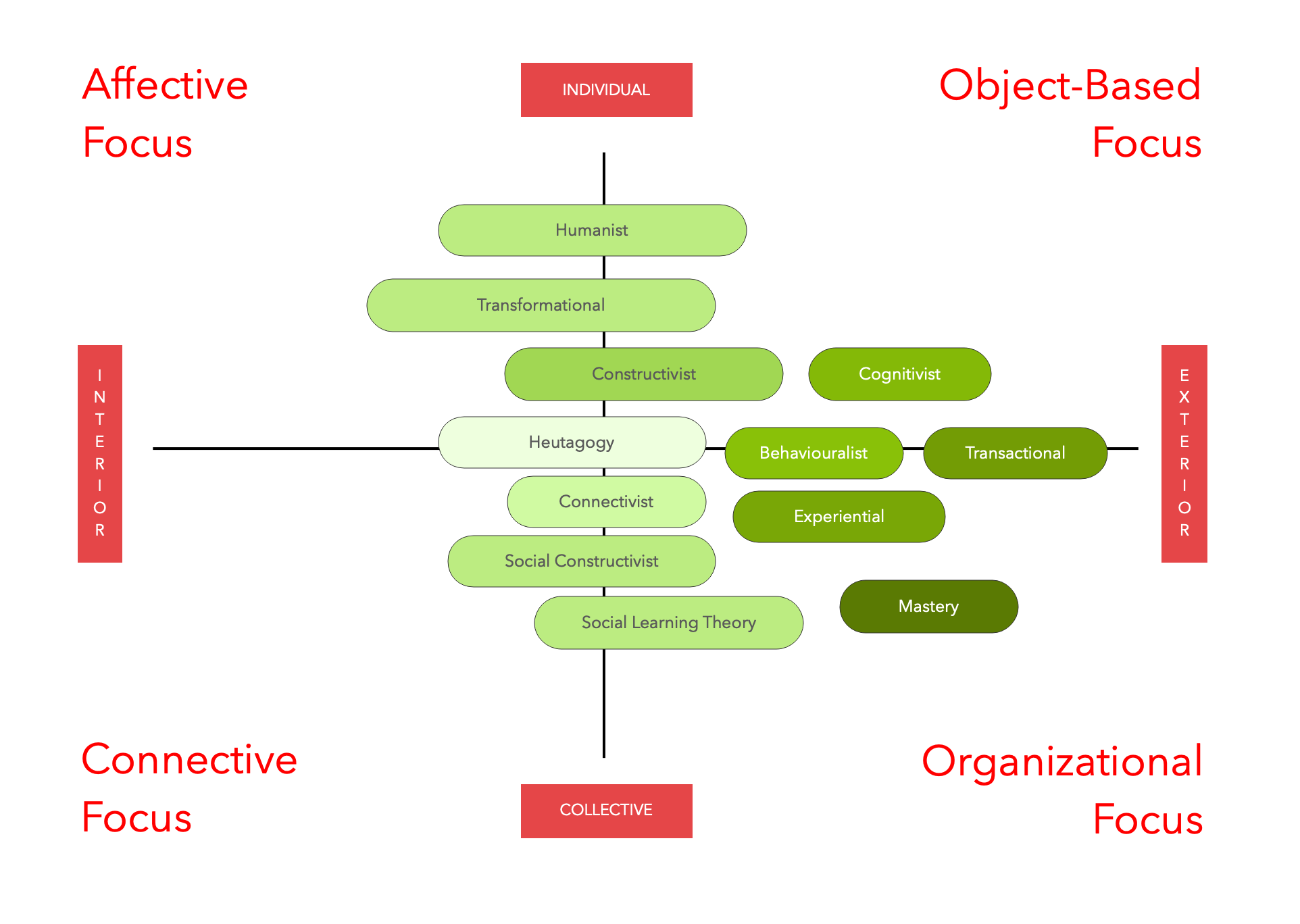
In our last two posts we introduced The Learnbase Learning Focus Map and then explored its axes and quadrants that we have based on Wilber’s Four-Quadrant model.
Today, we look at how we can apply the Learnbase Learning Focus Map in a practical way to support project planning. If you didn’t catch the previous two posts in this series, here’s the Learning Focus Map again.

Plotting Learning Theories
As the 19th Century moved into the 20th, a succession of educational movements arose that modelled emerging ideas about the brain and expanded the field of possibility in the application of educational theory. The medieval mastery model was challenged as mass education shifted from the practical to the notional. Each successive approaches also reflecting advances in technology and communication, and often parroting trends in business approaches to social and popular psychology.
The map below presents the earlier emerging approaches in darker shades and the more recent in lighter shades. It’s not important to understand each approach, but to observe the shift. We try to avoid seeing this as an oppositional shift- the new guard ousting the old, but instead as an expansion of the field of possibility. Every approach on the chart has its value and its place and can inform and guide us. We could also debate for hours (days!) the precise space that each approach could occupy, so this is a just a rough guide:

We can see that the earlier approaches (the darker green ones) emerged when the field of possibility was focused on the exterior. More recently there is an expansion of possibility from the external object and organization-based approaches to more individual internal affective approaches, as well as ones with an emphasis on the connective possibilities of communities of practice or experience. In some ways this is a return to classical approaches devised and described by the axial Greeks, and a rediscovery of the more personalized community-shared noticing and encouraging on both abstract internal and practical external proclivities at the root of First Nation approaches to education.
So the field of possibility is expanding. As learning designers we often work with experts who excel in their field. Their own personally successful experiences of education were formed at a time in the past, grounding and fossilizing attitudes to education in that moment (or even that of their favourite teacher). We find that this is further impacted by an assumption that because it worked for them it must work for all. This often results in the provision of external learning objects to match external organizational requirements, with the attitude that it’s up to the learner to find them, absorb them and be assessed by them on the organization’s terms.
This is not wrong. However, the field of possibility has expanded and we work with organizations to explore that. The ‘aha’ moments are lovely to experience. The Learning Focus Map is our basis for this.
In the next post we’ll zoom in from these more abstract conceptual approaches, and get down to the brass tacks of learning tools and tasks: Mapping Tasks, Tools and Technologies